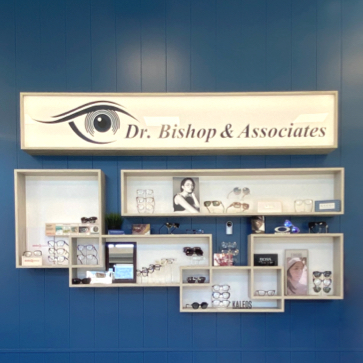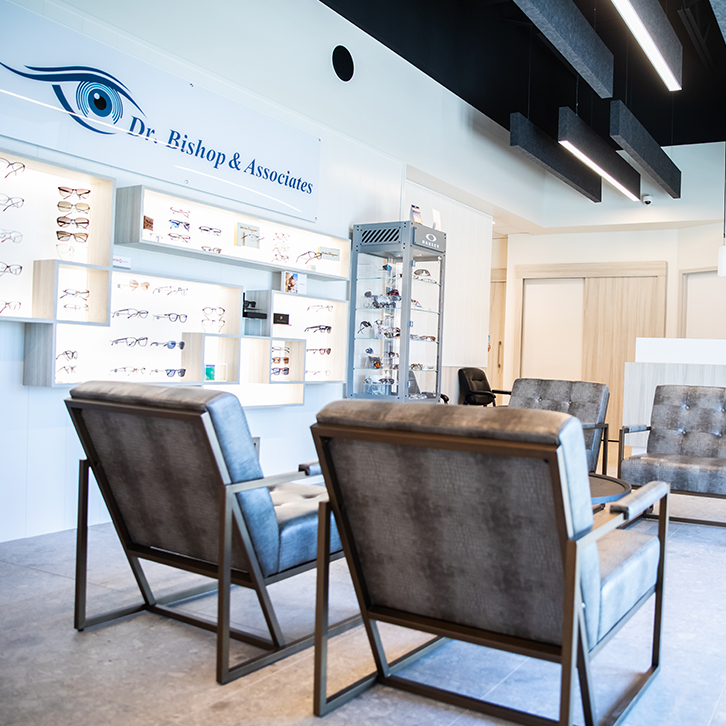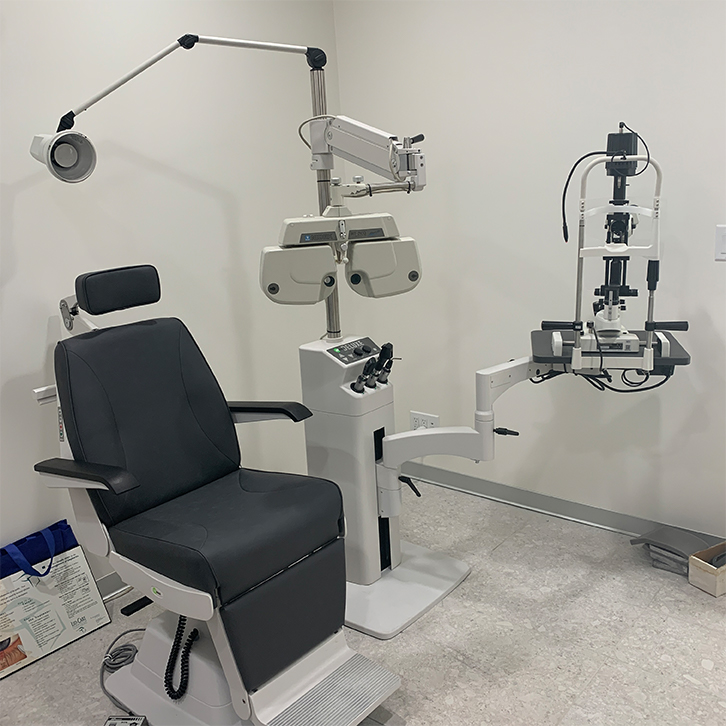During your yearly eye exam, your optometrist may mention that you or your child are suffering from myopia (also known as nearsightedness). Myopia is a common refractive error in children. The error can cause distant objects to appear blurry.
But what causes patients to develop myopia? Keep reading to learn how myopia develops and how it can be controlled.
What Causes Myopia?
In Canada, it’s estimated that 30% of the population suffers from myopia. Myopia is also one of the leading causes of blindness in the world. This refractive issue is normally diagnosed in patients before they turn 20 and is a growing issue among school-aged children.

As a refractive error, myopia is caused if the patient’s eyeball is too large. In a healthy-sized eye, the eyes shape helps refract light directly into the retina.
If the eyeball is too large, the light refracted focuses in front of the retina, causing a blurred image. This is a common issue that can run in families. However, this issue can also be a result of external factors. Studies suggest that the risk of myopia can increase if children spend extended periods of time on up-close work and not enough time outside.
If myopia is left uncontrolled, it can continue to progress and worsen the patient’s vision. Although the eyes normally stop changing after the teenage years, it’s possible for the issue to continue to develop into adulthood.
To correct this issue, eyeglasses or contact lenses are typically used. Using eyeglasses or contacts bends the light as it enters the eye so it directly focuses on the retina. Although using normal eyeglasses or contact lenses helps to correct the vision issue, it does not help to slow its progression. Slowing myopia progression is especially important in children.

Symptoms of Myopia
To limit the effects of myopia, it’s important to identify the symptoms of the issue early. However, it’s not always easy to identify the symptoms. To be confident in your vision, yearly eye exams are needed.
Common symptoms of myopia include the following:
- Faraway objects appear blurry
- Close objects appear clear
- Headaches
- Squinting
- Eye strain
- Eye fatigue when you focus on objects that are far away
For children, it may not always be clear to them when they’re dealing with a refractive problem such as myopia. Outside of bringing in your child for an eye exam, there are a few signs that might suggest your child has myopia.
As a parent, look for the following warning signs:
- Trouble reading in school
- Poor school grades
- Shortened attention span
- Holding objects close to their face
Myopia Progression Control
Controlling myopia early (especially in children) is extremely important. Thankfully, myopia control methods have continued to develop. These control methods are designed to not interrupt patient’s regular routines and are easy to use for children.
Ortho-K
Orthokeratology (Ortho-K) contact lenses differ from regular contact lenses as they’re worn during the night. Throughout the night, the lens will gently reshape the cornea, helping to control myopia. During the day, patients can enjoy clearer vision without having to wear glasses or contacts.
The reshaping done by Ortho-K lenses is not permanent. This means wearing them consistently is important for steady results. As well, if patients wish to have laser eye surgery in the future, their eyes will not react negatively to the surgery.
Learn more about Ortho-K contact lenses.
MiSight 1 Day
MiSight 1 day contact lenses are designed specifically for children. These lenses are disposable and easy to use for children. The MiSight 1 day lens is designed to slow the progression of myopia, helping them to enjoy clearer vision as they grow.
Multi-Focal Contact Lenses
As patients age, they can have trouble seeing objects that are far away and close. Multi-focal lenses offer a solution to this problem. These lenses have different prescriptions within the single lens. As patients adjust to see objects both far and near, their eyes will use different layers of the lens to correct their vision. This lens is designed to reduce the straining associated with close work, limiting the progression of myopia.
Learn more about multi-focal contact lenses.
MiyoSmart Lenses
MiyoSmart glasses lenses are an exciting innovation in the field of myopia control. As myopia causes light to fall in front of the retina, normal myopia correction methods simply correct this refractive error but don’t help control it.
MiyoSmart refracts light both in front of the retina and directly on the retina. This process helps the eye to correct over time and can help slow the progression of myopia.
Atropine
Different from using contact lenses or glasses to control myopia, atropine eye drops can be used. Applying atropine to the eye dilates the pupils, temporarily restricting the eye from focusing. As myopia can worsen by eye fatigue, using atropine can be an effective control method.
Although myopia progression control helps to slow the progression of myopia, it doesn’t “cure” the issue or remove the need for visual correction. However, myopia control is still extremely important. Taking the proper control steps at a young age can help to limit high prescriptions and reduce the risk of vision-threatening conditions later in life.
Manage Clear Vision
Myopia is a growing concern in healthy vision. If you or your child is suffering from the symptoms of myopia, book an appointment to learn about myopia control methods.



















